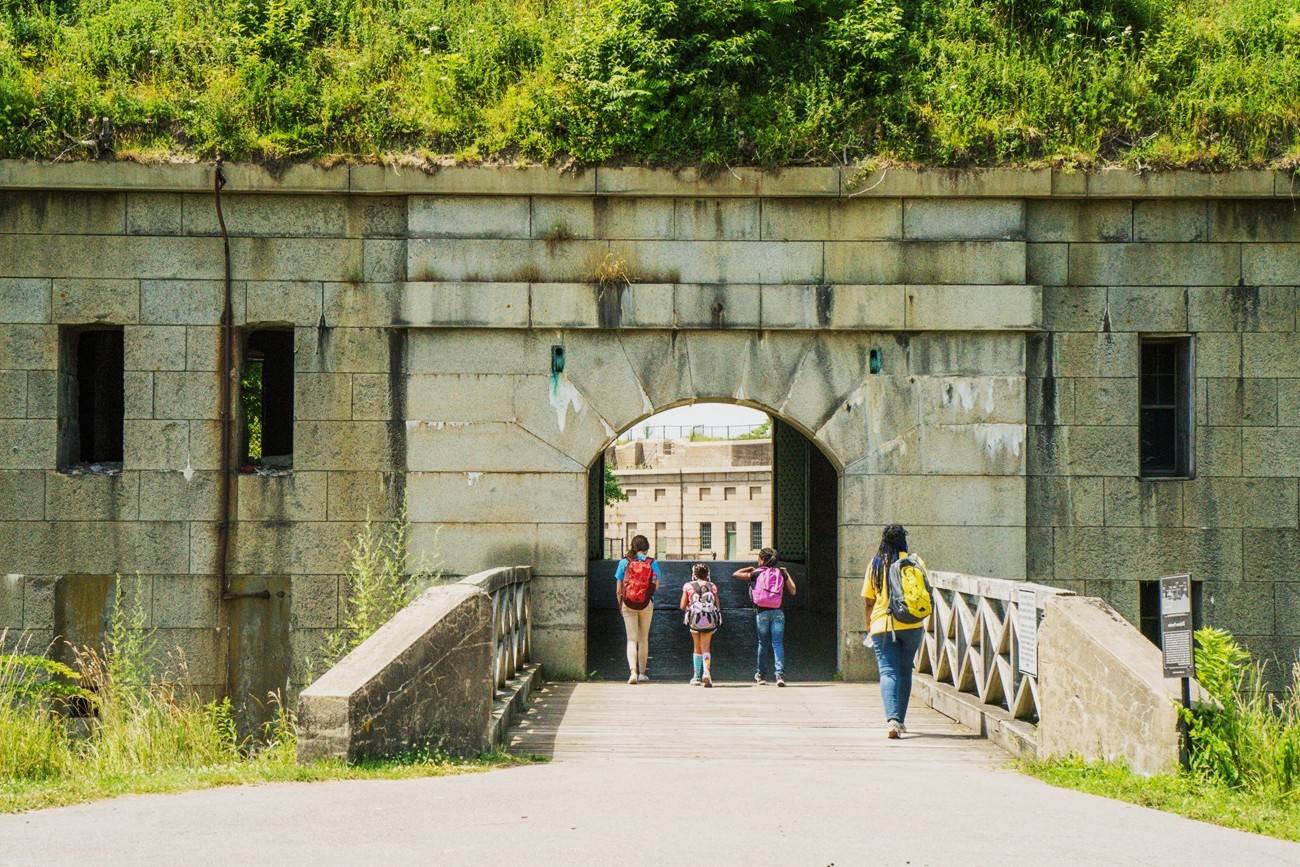Secrets Of Massachusetts’ Fort Warren

Have you ever wondered about the hidden gems of Massachusetts? One such treasure is Fort Warren, a historic site on Georges Island in Boston Harbor. Built in the mid-1800s, this fort played a crucial role during the Civil War. Today, it stands as a testament to America's rich history, offering visitors a glimpse into the past. Whether you're a history buff or just looking for a unique day trip, Fort Warren has something for everyone. From its well-preserved architecture to the stunning views of the harbor, this site promises an unforgettable experience. Ready to learn more about this fascinating destination? Let's dive in!
Discovering Fort Warren
Fort Warren, located on Georges Island in Boston Harbor, is a historical gem. Built in the 19th century, this fort has witnessed significant events in American history. Let's explore some of the most intriguing spots within Fort Warren.
The Entrance Gate
The entrance gate is the first thing visitors see. This imposing structure sets the tone for the fort's historical significance.
- Main Gate: The main gate, with its thick walls and iron doors, was designed to withstand attacks. It offers a glimpse into the fort's defensive capabilities.
The Parade Ground
The parade ground served as the heart of Fort Warren. Soldiers trained and gathered here, making it a central hub of activity.
Drill Field: This open space was used for military drills and ceremonies. Imagine soldiers marching in formation, preparing for battle.
Flagpole: The flagpole stands tall in the center of the parade ground. It symbolizes the fort's role in protecting the nation.
The Bastions
Fort Warren's bastions provided strategic vantage points for defense. These structures are a testament to military engineering.
North Bastion: This bastion offers panoramic views of Boston Harbor. It was crucial for spotting incoming ships.
South Bastion: The south bastion, with its cannons, was a key defensive position. It protected the fort from potential sea attacks.
The Casemates
Casemates are fortified rooms within the fort. They served various purposes, from housing soldiers to storing ammunition.
Officer's Quarters: These rooms were reserved for the fort's officers. They provide insight into the daily lives of those in command.
Powder Magazine: The powder magazine stored gunpowder and ammunition. Its thick walls ensured safety from accidental explosions.
The Sally Port
The sally port was a secure entrance and exit point. It allowed soldiers to move in and out of the fort without compromising security.
- Guardhouse: The guardhouse, located near the sally port, was where soldiers stood watch. It was essential for maintaining the fort's security.
The Prison
During the Civil War, Fort Warren served as a prison for Confederate soldiers. This part of the fort holds many stories of captivity and conflict.
Prison Cells: These small, cramped cells housed prisoners of war. They offer a sobering look at the harsh conditions faced by captives.
Prison Yard: The prison yard was where prisoners could get some fresh air. It was a rare respite from the confines of their cells.
The Tunnels
Fort Warren's tunnels are a maze of underground passages. They were used for moving troops and supplies discreetly.
Escape Tunnel: This tunnel was rumored to be an escape route for prisoners. Its mysterious history adds to the fort's intrigue.
Supply Tunnel: The supply tunnel connected various parts of the fort. It was essential for transporting goods without exposing soldiers to danger.
The Chapel
The chapel provided a place of worship and solace for soldiers stationed at Fort Warren. It reflects the fort's sense of community.
Chapel Interior: The simple yet elegant interior of the chapel offered a peaceful retreat. It was a place for reflection and prayer.
Chapel Bell: The chapel bell rang out across the fort, calling soldiers to service. Its sound was a reminder of duty and faith.
The Moat
Surrounding Fort Warren is a moat, adding an extra layer of defense. It is a striking feature that highlights the fort's strategic design.
Moat Bridge: The bridge over the moat was the only way in or out. It could be raised to prevent enemy access.
Moat Wall: The moat wall, with its steep sides, made it difficult for attackers to approach the fort. It was a formidable barrier.
The Museum
Today, part of Fort Warren has been converted into a museum. It offers visitors a chance to learn more about the fort's history.
Exhibit Hall: The exhibit hall displays artifacts and information about Fort Warren. It provides a deeper understanding of the fort's past.
Guided Tours: Guided tours are available for those who want a more in-depth experience. Knowledgeable guides share fascinating stories and facts.
Fort Warren is a treasure trove of history waiting to be explored. Each corner of the fort tells a story, making it a must-visit destination for history enthusiasts.
Fort Warren's Timeless Allure
Fort Warren offers a unique blend of history, mystery, and natural beauty. Located on Georges Island in Boston Harbor, this 19th-century fort has witnessed countless stories and events. Visitors can explore its well-preserved structures, learn about its role during the Civil War, and even hear tales of the Lady in Black, a famous ghost said to haunt the fort.
The scenic ferry ride to the island adds to the adventure, providing stunning views of the harbor and city skyline. Whether you're a history buff, a nature lover, or someone seeking a unique day trip, Fort Warren has something for everyone. Its rich past and serene surroundings make it a must-visit destination in Massachusetts. So, pack a picnic, grab your camera, and set out to uncover the secrets of this fascinating historical site.

